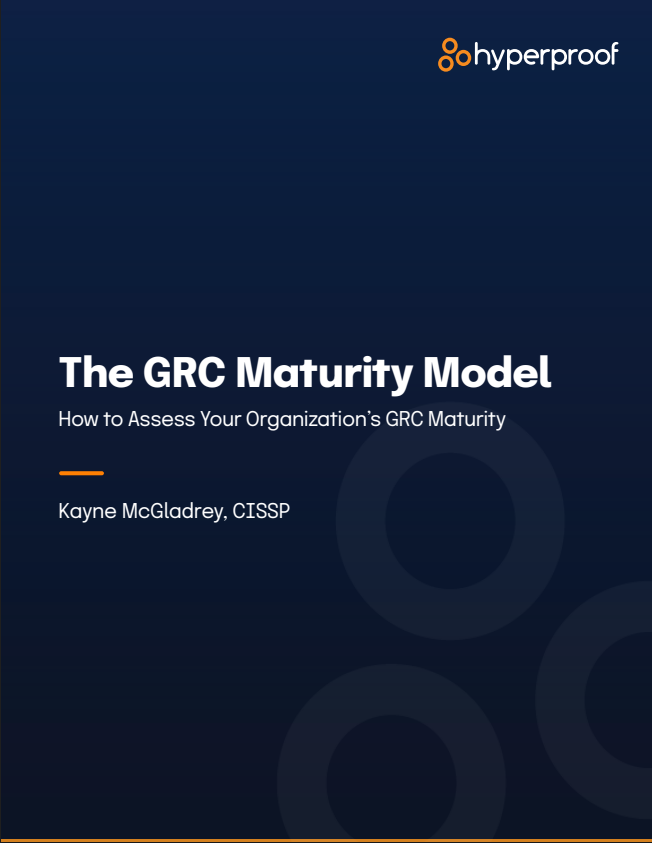Governance, Risk, and Compliance (GRC) is an organizational function business process that organizations use to manage and align their overall business strategy with external regulations and risk management. GRC helps organizations ensure they are operating responsibly and are compliant with legal, contractual, and regulatory requirements, while also managing the associated risks. Modern GRC leverages compliance operations to be efficient and transparent, breaking down organizational silos through intentional cross-departmental collaboration which helps further integrate GRC throughout organizations.
By integrating governance, risk management, and compliance, organizations can align their strategic goals more closely with their operational and tactical activities. This alignment ensures that every part of the organization is working towards the same objectives, with clear communication and consistent direction. For instance, if a company aims to expand into new geographic markets, an effective GRC team ensures that the applicable compliance requirements are met for those specific regions, and that risks associated with market entry are consistently assessed and managed. By doing so, GRC supports the organization’s growth objectives while reducing risks to the organization’s risk tolerance levels.
Governance, Risk, and Compliance
GRC helps to break down silos within an organization, promoting better communication and collaboration. In many lower-maturity organizations, different departments may independently handle risk, compliance, or governance issues without sharing information. This separation and lack of efficient transparency often leads to duplicated efforts and inconsistencies that ultimately inhibit business growth. A unified GRC approach encourages collaboration across departments, such as finance, legal, IT, and operations, enabling them to share critical information and tackle issues with a unified strategy. This not only saves time and resources but also ensures a more comprehensive and informed response to challenges, facilitating smoother operations and decision-making processes.
A well-managed GRC program enhances the credibility of the organization with stakeholders, including investors, customers, and regulatory bodies. Effective GRC practices play a crucial role in this by ensuring that the organization consistently adheres to legal standards and ethical practices. This compliance is visible to external parties, including regulators, customers, and investors, who are more likely to trust and maintain business relationships with a company that they perceive as responsible and reliable. Additionally, a robust GRC strategy can prevent the reputational damage that often follows regulatory breaches or risk management failures. By upholding high standards of compliance and risk management, organizations not only avoid penalties but also enhance their market position and stakeholder confidence.
In summary, GRC is a critical function because it helps organizations operate more efficiently and ethically, manage risks effectively, and comply with necessary laws and regulations, all of which are essential for long-term business success.
Improving the maturity of GRC cannot be achieved without organizational change management. As organizations aim to elevate their GRC maturity, they often need to adapt to new processes, technologies, and cultures. Effective change management ensures that these transitions are smoothly implemented, consistently adopted, and that the changes are sustainable over the long term.
Governance
- Governance: Board Oversight and Direction
- Ethical and Sustainable Practices
- Financial Oversight and Management
- Information and Technology Governance
- Mission, Vision, and Values
- Policies and Procedures
Risk
- Crisis Management and Response Planning
- Integrating Risk with Strategy and Decision Making
- Risk Assessment and Analysis
- Risk Mitigation Planning
- Risk Monitoring and Reporting
- Risk Prioritization
Compliance
- Attaining and Maintaining External Attestations and Certifications
- Compliance with Contractual Requirements
- Compliance with Legal Requirements
- Managing Relationships with Regulatory Bodies
- Monitoring and Auditing
- Remediation of Compliance Deficiences
Want to see where you stand?
You’ve learned about the GRC Maturity Model — now take the next step. Get a personalized view of your organization’s strengths and opportunities.
Take the Free Assessment

